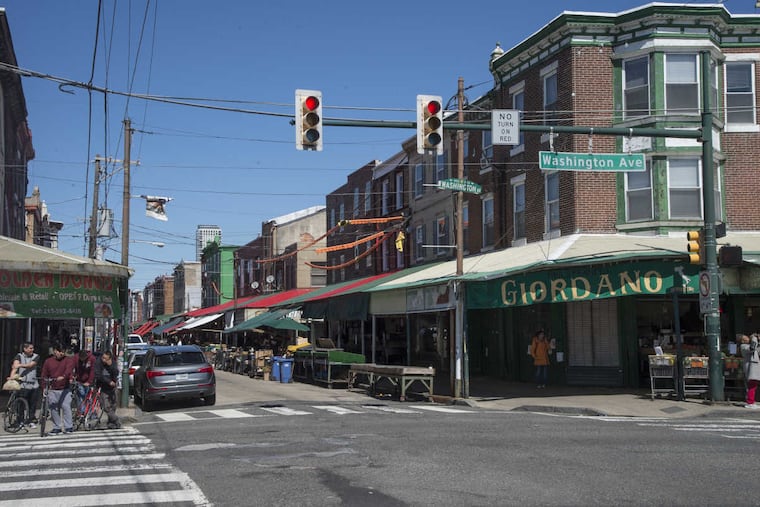Washington Ave. could be a great city street, with new survey pointing the way | Editorial
A majority of neighbors surveyed on Washington Ave. improvements would like to see parking-protected bike lanes, “floating” bus islands, wider sidewalks and shorter distances for pedestrians to cross.

Washington Avenue is the southern edge of Greater Center City, but it is a far cry from a great city street. It is a wide, unruly road lined with building supply companies, food businesses, strip malls, rowhouses, and often-chaotic traffic. Driving down Washington Avenue means dodging double-parked cars and forklifts. Catching the bus on it often means waiting without shelter or shade. Cyclists are relegated to stop-start bike lanes faintly painted on the road. Pedestrians traversing its broad expanse have to race across to beat the light before it changes. Though many brave it, Washington Avenue works well for no one.
Making a better Washington Avenue for all users has been a public priority since at least 2012, articulated in the city’s South District Plan and its related Bicycle and Pedestrian Plan. But the road has been, well, bumpy: The Planning Commission released a realignment study in 2014. A 2015 public outreach campaign by the city’s office of transportation about a proposed “road diet” to shrink travel lanes sought consensus but ended in stalemate. While many neighborhood groups voiced support, some residents didn’t trust the city’s traffic study. Businesses had concerns about reducing travel lanes and parking changes. Hearing conflicting feedback, Council members Mark Squilla and Kenyatta Johnson pumped the brakes, opting to support further study before introducing legislation necessary to realign the street.
Before Washington Avenue is repaved using federal funds next year, the city’s Office of Transportation, Infrastructure & Sustainability resumed public outreach this spring, holding 23 meetings with community groups and issuing an online survey in four languages that drew an impressive 5,458 responses.
Survey results released in July reveal newfound consensus over how to make the road safer, and maybe even more pleasant, for its diverse and demanding users. Respondents support reducing the total number of traffic lanes for most of its length from five to three - the same configuration that was seen as untenable in 2015. A clear majority of neighbors surveyed said their highest priorities are to add infrastructure that makes the street safer for pedestrians and cyclists. That could include parking-protected bike lanes, “floating” bus islands, wider sidewalks, and shorter distances for pedestrians to cross.
There are many details yet to be hammered out for a new design, including adequate parking and loading zones. And there is still plenty of time for a new round of political stalling. But the city should seize this moment to make bold change.
Between 2012-2018 Washington Avenue had 254 reported crashes, in which four people died and six others were seriously injured. The Kenney Administration committed to the goal of reducing traffic deaths to zero. This project will help Philly get one step closer.
Given the city’s limited paving budget and recent funding cuts to its Vision Zero initiative, this project is an important opportunity to remake a vital corridor and set an example for other ambitious redesign projects on streets citywide. It’s a chance to invest in a quality public environment that offers a safe crosstown route for all users, serves the street’s changing mix of businesses, and helps soften a hard-edged neighborhood boundary. There is no excuse for half-measures here.